
If you wish to store water as part of three month supply, you’ll need at least one gallon of water per person, per day for drinking and hygiene purposes. A normally active person needs at least ½ gallon of water per day, just for drinking. To store the safest and most reliable form of water, FEMA recommends that you purchase & store commercially bottled water. Keep bottled water in its original container and do not open until you need it and observe the expiration date. You can prepare your own water storage by using food grade water storage containers of reuse 2-liter plastic soft drink bottles. If you choose this method, you’ll need to thoroughly clean the containers with dishwashing soap and water and rinse completely so there is no residual soap. Additionally, for soft drink bottles, sanitize the bottles by adding one teaspoon of non-scented liquid chlorine bleach to a quart of water, and swish the sanitizing solution so that it touches all inside surfaces and rinse thoroughly with clean water. Then, fill the bottle with regular tap water from a city water supply (pre-treated with chlorine). If your tap water is not chlorinated, treat it yourself with two drops of non-scented liquid chorine bleach per gallon of water. Tightly seal the container using the original cap making sure that you do not contaminate the cap by touching the inside of it. Write the date on the outside of the cap so that you know when you filled it and store in a cool dark place.
Purifying Contaminated Water
The best way to avoid the problems associated with contaminated water is to have your own water storage before a disaster happens. Generally speaking, you can base your storage water needs on one gallon (roughly 4 liters) of water per person per day for drinking and hygiene use. If you should find that your water supply is non-existent, you should consider emergency methods to purify the existing sources of water you do find. If the power is out, it’s possible that your city water is not being purified. If you have a well on your property, with no electricity, the pump won’t work. If this happens, you’ll need to find city water, or another source of water, and purify it. Boiling water is one way of purifying it. The method below uses the boiling technique as well as chorine bleach to purify it after boiling.
A. Filter water using a piece of cloth or a coffee filter to remove solid particles.
B. Bring water to a rolling boil and maintain for a minimum of 10 minutes. For every 1000 feet above sea level, add one minute of boiling to the initial 10 minutes. If the water pot is covered, it will shorten the time to reach a boil.
C. Let it cool at least 30 minutes. Water must be cool for next step (chlorine treatment) or it will be useless.
D. Treat the water: You can use Liquid Chlorine Bleach to purify water. This method must be 5.25% or 6% Sodium Hypochlorite (like Clorox Regular Bleach) and contain NO soap, fragrance or phosphates. Measuring by drops is more accurate and the preferred method. If want to purify 1 GALLON / 4 LITERS of water, add 16 drops (1/4 tsp. / 1.25ml) chlorine. If you want to purify 5 GALLONS / 19 LITERS WATER, Add 80 drops (1 tsp. / 5ml) chlorine. When in doubt GET A CHLORINE TEST KIT.
E. Let it stand for 30 minutes.
F. If it smells of chlorine, use it. If it does not have a chlorine scent, add 16 more drops of chlorine bleach per gallon of water (or 8 drops per 2-liter bottle of water), let stand 30 minutes, and smell it again. If it smells of chlorine, use it. If it does not, discard it and find another source of water.
Also, if you use too much water for hygiene, you’ll have less to drink. So, you might consider storing some sanitizing gel to wash your hands with. We also suggest that you keep storage of disposable plates, cups, forks and knives. The less water is used to wash dishes, the more that will be available for more important needs. How much is needed for Sanitation? In a short term emergency, the biggest concern is how to flush toilets. That’s why we suggest that you fill you bath tubs with water immediately following a power outage and keep them full and use this water to flush toilets. Pool water can also be used. Remember this water should be considered non-drinkable, but serves its purpose for flushing toilets in the short term. If you use this method, you’ll need a bucket to move the water from the bath tub to the toilet
And just for fun....
Food Storage Frosty!

1 1/2 - 2 cups ICE water- really, really cold.
1 1/2 cups non-fat dry milk powder
2/3 cup sugar
1/4 cup unsweetened cocoa
2-3 cups ice cubes
2 Tbsp vegetable oil (yes, really- it’s an emulsifier)
Place ALL the ingredients in the blender, including the oil. Use less water for a thicker milkshake or more for a shake that’s easier on your blender motor. With lid on, process for two minutes. Makes about 4 shakes.










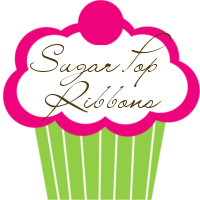












































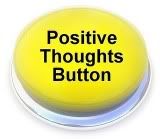



























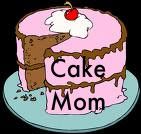






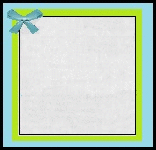


















































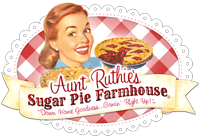

2 comments:
way to follow counsel and spread food storage across the web, my dear!
i need to try the food storage frosty!
<3 <3 <3
hey, i was reading another recipe (on a website called 'hillbilly housewife'!) that said to add in a 5 second squirt of non-stick cooking spray, it contains mostly liquid lecithin, which is an excellent emulsifier, it will make it even creamier and frosty-like.
Post a Comment